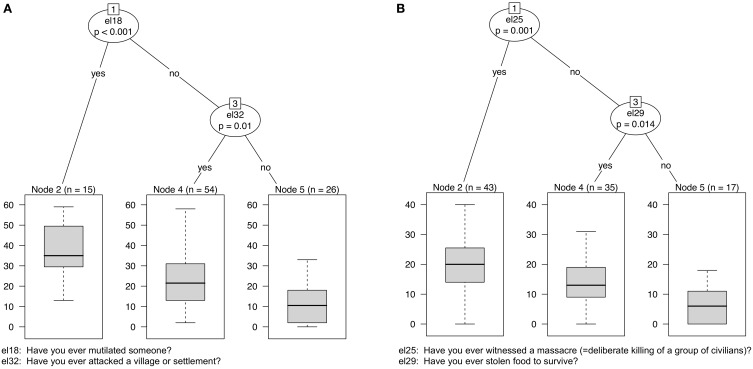Figure 2.
Single trees for predicting AAS and PSS-I scores by specific events. Note: Regression trees with asymmetric interactions for the appetitive aggression level (AAS score; A) and PTSD severity (PSS-I score; B) predicted by 31 items. (A) Significant partitioning is primarily achieved by the item “Have you ever mutilated someone?” For those who answered this question in the negative, “Have you ever attacked a village or settlement?” provides further significant partitioning. The box plots present the means, quartiles and ranges for the AAS scores in each group. Those having mutilated someone scored highest on the AAS, whereas those having neither mutilated someone nor attacked a village or settlement had the lowest AAS scores. Ex-combatants who did not mutilate someone but had attacked a village or settlement show the widest range. (B) The PSS-I score is first split by the item “Have you ever witnessed a massacre?” and partitions best for those who answered the item “Have you ever stolen food to survive?” in the negative.

